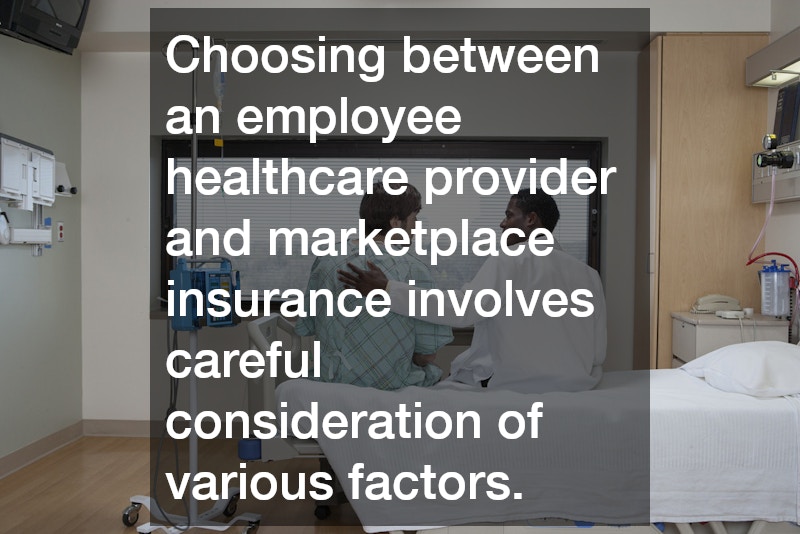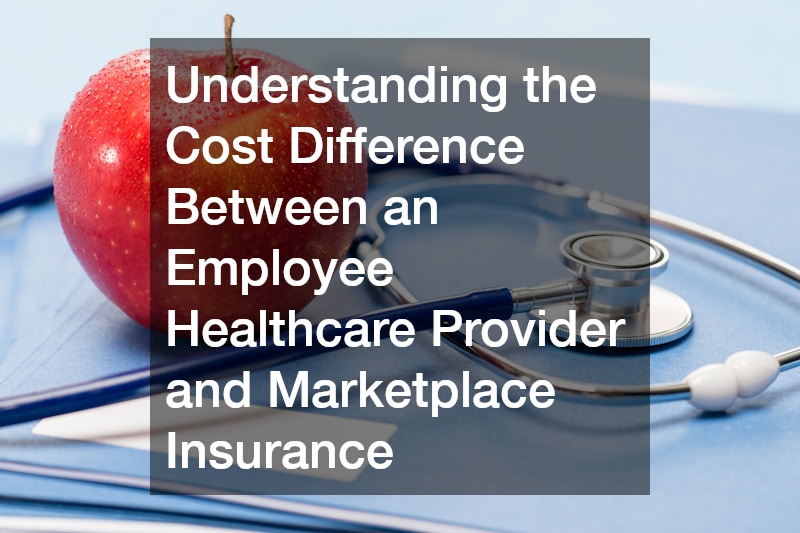
In this article, we will explore the financial implications of choosing between an employee healthcare provider and marketplace insurance. With rising healthcare costs and the variety of insurance options available, it is crucial to understand the differences between these two types of insurance plans. This guide will provide you with the necessary insights to make an informed decision that best fits your needs and budget.
What are the Differences in Coverage and Cost Structure?
Employee Healthcare Provider Plans
Employee healthcare provider plans often involve contributions from your employer, which can significantly lower your monthly premium costs. These plans typically offer a defined network of doctors and specialists, encouraging enrollees to stay within the network to minimize out-of-pocket expenses.
However, the choice of providers may be limited, which can affect accessibility to certain specialists or care centers.
Employer contributions can vary, sometimes covering a substantial portion of the premium or even other costs like deductibles. Some plans allow for limited out-of-network visits but often at a higher cost, emphasizing the importance of staying within the designated network. With the potential for lower premiums through employer contributions, these plans can represent a cost-effective choice for many employees.
Marketplace Insurance Plans
Marketplace insurance plans offer an alternative with more flexibility in choosing providers, which is advantageous for those requiring care from specific doctors or outside their employer’s network. These plans come in various types and levels of coverage, ranging from catastrophic insurance to comprehensive plans. Subsidies based on income level further help make these plans affordable for a wide range of individuals.
Unlike employee healthcare plans, marketplace options often provide a wider choice of providers, accommodating diverse healthcare needs. Subsidies are a crucial factor in these plans, as they reduce the effective premium costs for low and middle-income households by providing financial help. The trade-off for this flexibility can sometimes be higher initial premium costs without employer-subsidized rates.
Comparison of Out-of-Pocket Costs
One critical aspect when deciding between these plans is the comparison of out-of-pocket costs, which include deductibles, copayments, and coinsurance. Employee healthcare plans can offer lower out-of-pocket costs due to employer contributions toward these expenses. However, marketplace plans may have varying costs depending on the coverage level chosen and eligibility for subsidies.
Employee plans typically provide more predictable out-of-pocket expenses with set copayments for in-network visits, although costs rise if out-of-network care is necessary. Marketplace plans, meanwhile, offer different tiers of coverage where lower premiums might be associated with higher out-of-pocket costs, and vice versa. It’s crucial to evaluate these aspects when determining the most cost-effective option for personal needs.
How Do Personal Circumstances Affect the Cost Decision?
Family Size and Health Needs
The size of your family and specific health requirements play crucial roles in determining the most suitable insurance plan. Larger families might find employee healthcare plans more advantageous due to shared deductibles and caps on family out-of-pocket costs. Conversely, marketplace plans can sometimes provide greater overall flexibility for accommodating various specialist visits.
Health needs dictate the plan’s cost-effectiveness as chronic conditions often require consistent care management, influencing the preference for plans with lower copayments and coinsurance. Employee plans might shield against unpredictable costs due to unexpected health issues. Meanwhile, marketplace plans afford individuals the capability to tailor coverage according to specific health conditions.
Income Levels and Financial Assistance
Income levels significantly influence the decision to choose between marketplace insurance and employee-provided plans, as they determine eligibility for financial assistance or subsidies. Individuals with lower incomes may benefit more from marketplace subsidies, which are designed to make healthcare affordable regardless of employer-sponsored options. These subsidies can make marketplace insurance more economically viable for those without substantial employer contributions.
On the other hand, higher-income individuals might find that employer plans better fit their financial situation due to capped out-of-pocket costs and consistent premiums. Particularly, individuals whose employers heavily subsidize healthcare can reap substantial savings, making employee plans an advantageous choice. Navigating the intricacies of income-based assistance is key to selecting an optimal insurance route.
Impact of Employment Status and Changes
Your employment status and potential changes can greatly impact healthcare insurance decisions and their associated costs. Full-time employment often provides access to more comprehensive employee healthcare benefits with lower individual costs due to company contributions. However, part-time employment or job transitions might lead to gaps in coverage or necessitate reliance on marketplace options.
Choosing between an employee healthcare provider and marketplace insurance involves careful consideration of various factors such as cost structures, personal circumstances, and potential benefits. By understanding the key differences and evaluating your needs, you can select a healthcare plan that aligns with both your financial and health objectives. This understanding is crucial in navigating the complexities of healthcare insurance effectively.
.




